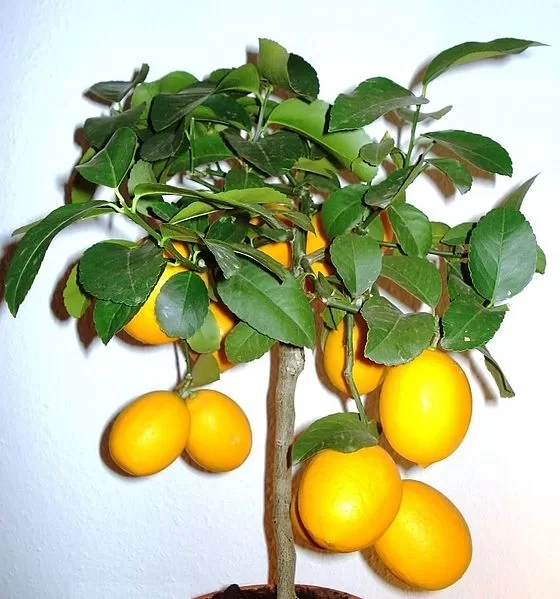Growing citrus indoors is a fantastic way to liven up your living space while also providing yourself with fresh fruit all year round.

Not only do citrus plants add beauty to any room, but they also offer a host of benefits such as purifying the air and reducing stress. In this article, we will be discussing the best citrus fruits to grow indoors, how to properly care for them, and important factors to consider before starting your indoor citrus garden.
In addition to providing a fresh, citrusy aroma to your home, indoor citrus plants offer many of the same benefits as garden plants. They can purify the air in your home and add natural beauty to your living space.
Whether you are an experienced gardener or just starting, growing citrus indoors can be a fun and rewarding way to enjoy fresh fruit all year round. Before starting your indoor citrus garden, it’s important to consider factors such as lighting, temperature, and humidity levels to ensure that your plants thrive.
1. Importance and Benefits Of Growing Citrus Indoors
Citrus fruits are not only delicious, but they also provide many health benefits. They are high in vitamin C, which boosts the immune system and aids in collagen production. Growing citrus indoors allows you to enjoy fresh fruit all year round, without worrying about the weather or season. Additionally, indoor gardening is a great way to connect with nature and reduce stress.
Aside from the health benefits of consuming citrus fruit, indoor gardening has many other benefits as well. It helps to purify the air in your home, adds natural beauty to your space, and can even save you money on groceries.
2. Factors to Consider Before Growing Citrus Indoors
Growing citrus indoors can be a rewarding experience, but it does require some careful planning and consideration. Before you start your indoor citrus garden, here are some important factors to keep in mind.
- Lighting and Temperature Citrus trees require a lot of light to grow and produce fruit. You will need to provide them with bright, indirect sunlight for at least 8 hours a day. If you don’t have a sunny window, you may need to supplement it with artificial lighting. In addition to lighting, you will also need to consider the temperature in your home. Citrus trees thrive in temperatures between 60 and 85 degrees Fahrenheit, so make sure to keep your home within this range.
- Humidity and Watering Citrus trees require consistent watering, but it’s important not to overwater them. You should water your citrus tree when the top inch of soil feels dry to the touch. Additionally, citrus trees prefer humid environments, so you may need to provide additional humidity if you live in a dry climate. You can do this by placing a tray of water near your tree or using a humidifier.
- Space and Size Before choosing a citrus tree to grow indoors, consider the size of your space. Some citrus trees can grow quite large, so make sure you have enough room for your tree to thrive. You should also consider the size of the pot you will need to use. Citrus trees require pots that are at least 12 inches in diameter, so make sure you have enough space for a larger pot. If you don’t have a lot of space, consider growing a dwarf variety of citrus trees. These smaller trees are easier to manage and can still produce a good amount of fruit.
3. Types of Citrus
3.1 Key Characteristics Of Citrus Fruits
Citrus fruits are known for their bright colors, sweet or sour flavors, and juicy textures. They grow on evergreen trees, which can range in size from small shrubs to large trees. Some common citrus fruits include oranges, lemons, limes, and grapefruits.
3.2 The Best Citrus Fruits To Grow Indoors
When choosing which citrus fruit to grow indoors, it is important to consider the size of the tree, the space you have available, and your personal preference. Some of the best citrus fruits to grow indoors include:
- Dwarf Meyer Lemon: This small tree produces juicy and sweet lemons that are perfect for cooking and baking.
- Calamondin Orange: This small tree produces tart and tangy oranges that are great for making marmalade or adding to cocktails.
- Persian Lime: This tree produces small and juicy limes that are perfect for making guacamole or adding to drinks.
- Kaffir Lime: This small tree produces fragrant leaves and small, bumpy limes that are commonly used in Thai cuisine.
3.3 Citrus Trees And Their Suitable Environments
Citrus trees require bright, indirect sunlight in order to grow and produce fruit. They also need well-draining soil and consistent watering. Depending on the type of citrus tree you choose, you may need to provide additional humidity or fertilization to help it thrive.
4. Growing Citrus Indoors
4.1 How to Prepare for The Growing Environment
To prepare the growing environment for your indoor citrus trees, you will need to choose the right pot, soil, and lighting. Citrus trees require a pot that is at least 12 inches in diameter, with drainage holes at the bottom. You should choose a well-draining potting mix that is specifically designed for citrus trees. Additionally, you will need to provide bright, indirect sunlight for at least 8 hours a day.
4.2 Planting and Maintaining Citrus Indoors
When planting your citrus tree, be sure to plant it at the same depth it was in its original pot. Water it thoroughly and place it in a sunny location. As your citrus tree grows, you will need to prune it regularly to maintain its size and shape. You should also fertilize it regularly to ensure that it receives all the necessary nutrients it needs to grow and produce fruit.
4.3 Fertilizing your Indoor Citrus Trees
If you want your indoor citrus trees to thrive, fertilization is a crucial factor to consider. Fertilizing with a high-quality citrus-specific fertilizer that contains essential nutrients such as nitrogen, phosphorus, and potassium is recommended. This will ensure that your tree has the necessary nutrients to grow and produce fruit.
The frequency of fertilization will depend on the type of fertilizer you choose, but it is generally advised to fertilize your citrus tree every 4-6 weeks during the growing season. It’s important to follow the instructions on the fertilizer package carefully to avoid over-fertilization, which can harm your tree. So, make sure to fertilize your orange tree properly to enjoy the best results.
4.4 Dealing with Pests And Diseases
Like any plant, indoor citrus trees are vulnerable to pests and diseases. Common pests that can affect citrus trees include spider mites, scale insects, and aphids. You can use organic insecticides or natural remedies, such as neem oil or a mixture of water and dish soap, to control these pests.
Diseases that can affect citrus trees include root rot and citrus canker. To prevent these diseases, make sure your tree has good drainage and avoid overwatering. If you notice any signs of disease, such as yellowing leaves or moldy spots on the fruit, you should take action immediately to prevent the disease from spreading.
5. Conclusion
Growing citrus indoors can be a rewarding and enjoyable experience, allowing you to enjoy fresh fruit all year round and adding natural beauty to your home. By choosing the right type of citrus tree, providing the proper growing conditions, and taking care of your tree through regular pruning and fertilizing, you can enjoy a healthy and thriving indoor citrus garden.
Remember to consider the factors outlined in this article before starting your indoor citrus garden, and take the necessary steps to prevent pests and diseases. With a little bit of effort and care, you can enjoy the sweet taste and beautiful appearance of garden plants in the comfort of your own home, while fertilizing orange trees regularly to ensure healthy growth.









